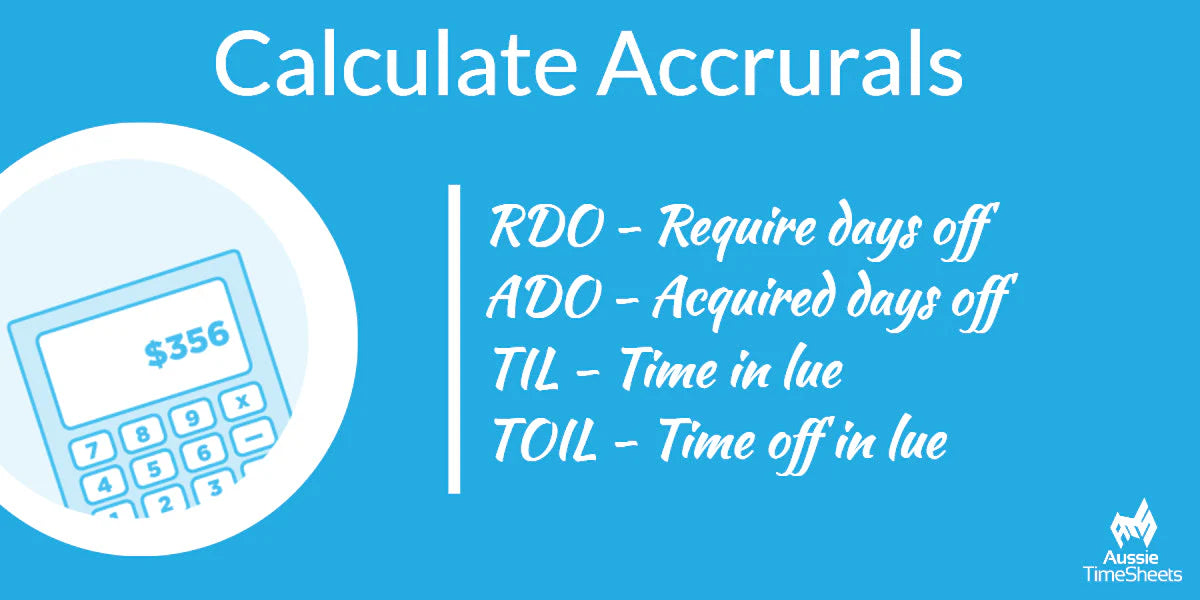We'd love to hear from you!
Please complete our online enquiry form here and our friendly sales team will assist you:

ATS Premier version and Workforce TNA software gives you the ability to calculate multiple accruals. This feature is particularly useful if your employees work additional hours over a period of time which is not paid and for and those hours are banked to be taken at a later time. Our software will automtically calculate and accrue time.
These accruals include an RDO, ADO, TIL, TOIL.
A required day off (RDO) is a day in a roster period that an employee doesn't have to work. An employee's day off can be paid or unpaid, depending on how RDOs are set out in an award or registered agreement.
An example of this is when an employee has worked extra hours each day that add up over a set period of time and this is taken as a rostered day off or a required day off (RDO). For example, when a full-time employee works a 40 hour week and is paid for 38, 2 hours is accrued over a 3 week period when on the 4th week they are entitled to take 6 hours of time off and is paid from the time accrued.
Does annual leave accrue on a RDO?
Yes, employee leave accrues on odrinary time paid. For example if an employee takes 40 hours of annual leave 2 hours will be banked as an RDO.
Do RDO's accrue on annual leave?
No, RDOs do not accumulate on annual leave, personal/carer's leave, workers' compensation, long service leave, special leave or unpaid leave.
Find information about RDOs calcualtions in your award from ther Fair Work Website.
An Acquired day off (ADO) is a day in the period of time where the employee may have worked too many hours. Employees working more than 38 hours per week are provided with a paid Additional Day Off (ADO) so that the hours that they work average out to 38 per week.
The same example applies for an acquired day off (ADO).
Time off in Lieu (TOIL) & Time in Lieu (TIL) Some awards and registered agreements allow time off to be taken instead of being paid overtime pay. This is also known as 'time in lieu', 'time off in lieu' or 'TOIL'.
Time in lieu (TIL) and Time off in lieu (TOIL) is the time that is accrued over an employee 38 hour week. For example, when a full-time employee works a 40 hour week and is paid for 38, 2 hours is accrued over a 3 week period when on the 4th week they are entitled to take 6 hours of time off and is paid from the time accrued.
This can happen across many industries depending on the rules in the award that applies to your industry.

